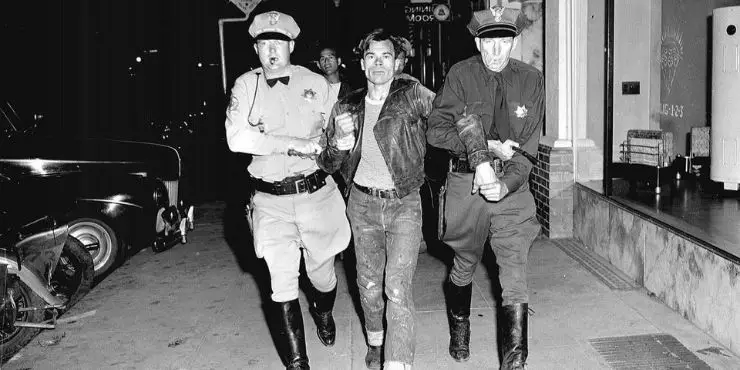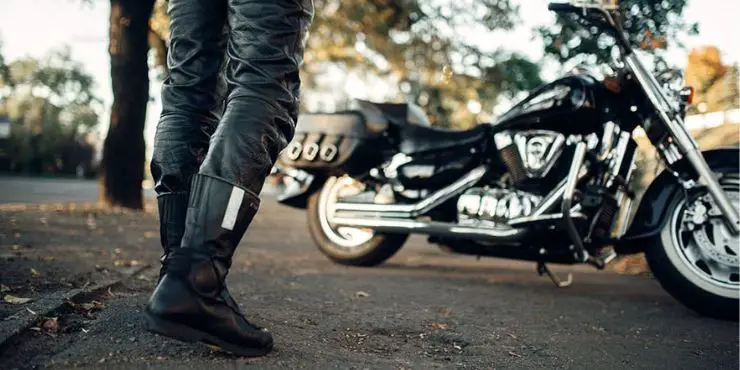Are you a Harley-Davidson biker looking to get new patches on your biker outfit, but don’t know the meaning of different patches? If yes, then you’re definitely in the right place at the right time.
The 13 patch often represents the letter M, which stands for marijuana or refers to a rider’s association with outlaw motorcycle clubs.
In this article, you’ll get to know all about the 13 patch, the historic meaning of the diamond 13 patch, what does the 13 patch mean for Harley-Davidson bikers, the historic meaning behind the 13 patch, why you should avoid wearing the 13 patch in today’s motorcycle scene, and more. Stick around to get all the answers that you’re looking for.
What does the 13 patch mean for a Harley-Davidson rider
If you have been involved with the Harley-Davidson biker gang scene for a while, you would have definitely heard of patches and MC clubs. One such biker patch that gets a lot of attention is the diamond-shaped patch with the number 13. The 13 patch is usually worn as a part of the colors between the top and bottom rocker. There are different meanings and misinformation surrounding the 13 patch for decades.
The 13 patch was created in Southern California as an anti-AMA (American Motorcycle Association) common patch. This patch was used by the early outlaw clubs for marking their distinctions from the AMA clubs and expressing their dissatisfaction and defiance of the AMA. In the early 30s, AMA tried taking over the motorcycling and club scene. Resentful and in defiance of the rules that AMA had set up, a number of outlaw motorcycle clubs were born, and this gave birth to the 13 patch culture.
The 13 patch even stood for the top 13 racing outlaw motorcycle clubs in southern California. The top racing outlaw motorcycle clubs were awarded both a trophy and the patch. They ended up becoming a part of what was referred to as the diamond club. This club was a small part of the Southern California outlaw federation racing scene.
AMA called the outlaw racing clubs and their members 1percenters in the late 40s, and it led to the birth of the 1percenter clubs. However, it wasn’t until the early 60s that the term 1% started to catch on. The number 13 diamond patch shape started being replaced with a 1% diamond patch. Outlaw motorcycle gangs started changing the colors of the club to display the 1% patch. Many bikers began to wear the 13-diamond shape and 1percenter patch together.
When they were worn together, the 1percenter was worn as a square shape, whereas the 13 patch was a diamond shape. The transition from 13 to the 1% biker patches was in full swing during the 70s. This is when bikers completely gave up the 13-diamond patch, and it was replaced by the 1percenter in a diamond shape as a part of their 3-piece patch.
Why should you avoid wearing the 13 patch
The outlaw MCs and OMGs are essentially a small fraction of the biker enthusiasts that you’ll come across on the road. However, it is a great idea to stay away from certain patches or imagery associated with their activities. One of those patches is the 13 patch.
If a veteran biker confronts you about a patch that you might not know the full meaning of, you should calmly and politely de-escalate the situation. If you’re asked to remove a certain patch or your vest, it is advised that you should do so for preventing further trouble. Being informed about the 13 patch and why it’s a motorcycle patch to avoid will help ensure that you stay safe while riding.
Many might wonder if it’s okay to wear the 13 patch after purchasing a Harley-Davidson bike, but it’s not so simple. It’s a bit trickier because the number 13 is used across many cultures to ward off bad luck, and many people wear it for different reasons.
In the case of motorcycle patch culture, “13” is seen as a representation of the 13th letter of the alphabet “M”, which stands for marijuana. Sometimes, the 13 patch means that the patch wearer sells or enjoys illicit substances. “13” as a placeholder for M can also be used for denoting the use or sale of street drugs being sold or trafficked by outlaw MCs. A diamond 13 patch could have a broader meaning, and the diamond is what changes the meaning. The original outlaw biker clubs weren’t really criminal organizations. Instead, they were clubs that weren’t recognized or legitimized by memberships in the American Motorcycle Association.
Hence, the diamond 13 patch was started as a way to recognize the first 13 outlaw biker clubs of the 30s. The diamond still exists as an outlaw motorcycle patch for, symbolizing outlaw status in the modern sense – outside the laws of society and the police. Even if you still want to rock the number 13, you should prefer staying away from wearing the Diamond 13 as it could have a more in-depth meaning for patched-in MC members. Having a more profound insight will help you know exactly why you should avoid the diamond 13 patch.
The historic meaning of the 13 diamond patch
In the early 1900s, motorcycle racing was becoming an incredibly popular sport. Even though it was unregulated at the time, the sport started growing in popularity with both fans and racers. Racing teams were formed, and they competed all over the United States. As the sport grew, more and more accidents started occurring, and they led to serious injuries. In 1924, the American Motorcyclist Association was formed by the Motorcycle and Allied Trades Association.
The AMA set up safety rules and racing guidelines and enacted a fee that each racer and/or team needed to pay. Many of the racing teams became discouraged by this and continued holding races despite the AMA’s guidelines. The AMA referred to the teams that continued racing as Outlaws. The outlaw racing teams created a diamond 13 patch, which was used as a symbol for being anti-AMA. This symbol was given to the Top 13 ranked racing clubs. In the late 30s and early 40s, as many men were returning from war, they found themselves looking for the brotherhood that they experienced across seas with other soldiers.
Biker clubs became a popular avenue and many biker clubs were formed in this period. Many of those clubs wore the diamond 13 patch as a “tip of the hat” to mark the humble beginnings of Outlaw Motorcycle Racing Clubs. At the time, the diamond 13 patch simply meant “outlaw”.
On July 4th, 1947, a Gypsy Tour motorcycle rally sanctioned by AMA was held in Hollister, California. Over 4,000 motorcyclists flooded the event. Motorcycle clubs like the Boozefighters and the Pissed Off Bastards descended upon the town. For the next few days, this rally got out of hand. Local police and citizens alike were frightened. This event ended up becoming known as the Hollister Riot.

After the mayhem, the AMA made a public statement, claiming that 99% of motorcycle enthusiasts were good law-abiding citizens. The outlaw clubs took pride in being the “1percenter” and the 1% patch was born out of that announcement.
Conclusion
Thank you for reading. Hopefully, now you know a lot more about the 13 patch, the historic meaning of the diamond 13 patch, what does the 13 patch mean for Harley-Davidson bikers, the historic meaning behind the 13 patch, why you should avoid wearing the 13 patch in today’s motorcycle scene, and more. The 13 patch means many different things for Harley-Davidson bikers.
For some bikers, the 13 patch could mean the 13th letter of the English alphabet – M, which stands for either Marijuana or Motorcycle. The other meanings of 13 patch could mean jurors and judge, support patch, or 13 loops and 13 steps. At one point, the diamond 13 patch was created as an anti-AMA (American Motorcycle Association) common patch in Southern California. It was used by early outlaw clubs for marking their distinctions from the AMA clubs.

